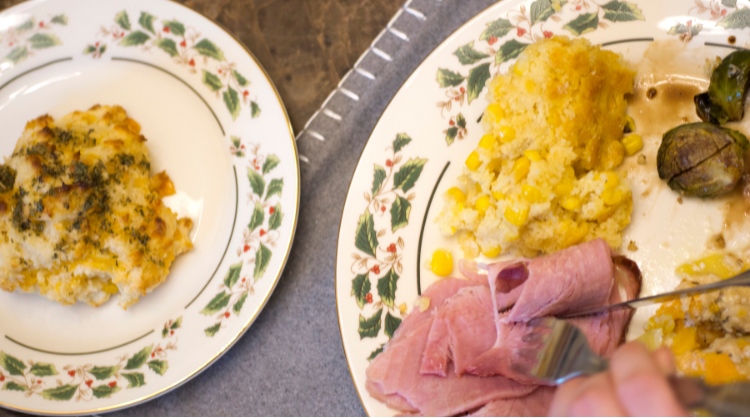Engaging children in healthy eating can be a challenge, especially when it comes to incorporating nutritious foods like fruits, vegetables, and whole grains into their diet. However, creative and fun presentation ideas can make meals more appealing and encourage children to enjoy a wider variety of healthy foods. Here are some strategies to transform everyday meals into exciting and kid-friendly culinary experiences:
1. Bento Box Art


Bento boxes, a staple in Japanese cuisine, are known for their colorful and creative presentation. By arranging food in a bento box, parents can create fun shapes, animals, or even favorite characters using healthy ingredients. For example, rice can be molded into the shape of a panda or a cat, while vegetables like cucumbers and carrots can be cut into stars, hearts, or flowers. This visually appealing approach not only makes the meal more enticing but also introduces children to a balanced diet in a playful way.
2. Colorful Food Arrangements

Children are naturally drawn to bright colors, and incorporating a variety of colorful fruits and vegetables into their meals can make them more attractive. A « rainbow plate » is an excellent way to achieve this, where different colored fruits and veggies are arranged in a rainbow pattern. For instance, cherry tomatoes, orange bell peppers, yellow corn, green broccoli, and purple grapes can be placed side by side to create an appealing, nutrient-rich plate. This not only makes the meal fun but also ensures that children receive a wide range of vitamins and minerals.
3. Fun Food Shapes and Cutters

Using cookie cutters or specially designed food molds, parents can cut sandwiches, pancakes, fruits, and vegetables into fun shapes like stars, hearts, animals, or even themed shapes for holidays and special occasions. A sandwich shaped like a dinosaur or a heart can turn an ordinary lunch into an exciting event. These shapes can make familiar foods feel new and exciting, encouraging kids to eat more of what they might otherwise refuse.
4. Skewers and Kabobs


Foods served on skewers or kabobs can be particularly appealing to children. Mini skewers made with colorful veggies, cheese cubes, and lean meats or fruits like strawberries, pineapple, and grapes offer a fun and interactive way for kids to enjoy a balanced meal. The act of eating off a skewer adds an element of fun, and the bite-sized portions make it easier for kids to try new foods without feeling overwhelmed.
5. Themed Meals


Creating themed meals based on a child’s favorite movie, book, or holiday can make mealtime an exciting experience. For example, a « pirate-themed » lunch might include a « treasure map » tortilla wrap, « gold coin » cucumber slices, and « jewel » fruit salad. A « forest picnic » theme could feature « tree » broccoli florets, « mushroom » cherry tomatoes, and « log » celery sticks with peanut butter. Themed meals not only capture a child’s imagination but also provide an opportunity to introduce a variety of healthy foods in a context they enjoy.
6. Interactive Build-Your-Own Meals

Allowing children to assemble their own meals can make eating more interactive and enjoyable. A « build-your-own » taco or pizza station, where kids can choose their own toppings from a selection of healthy options, empowers them to take part in meal preparation and encourages them to try new foods. This hands-on approach also gives children a sense of control over what they eat, making them more likely to enjoy the meal.
7. Hidden Veggie Creations


For picky eaters who might avoid vegetables, hiding veggies in familiar foods can be an effective strategy. For instance, spinach or carrots can be blended into smoothie bowls or muffins, cauliflower can be mixed into mac and cheese, and zucchini can be added to pancakes or brownies. These hidden veggie creations ensure that children get their necessary nutrients without even realizing it, all while enjoying their favorite foods.
8. Edible Characters and Faces


Creating edible characters and faces using fruits, vegetables, and other healthy foods can make meals more fun. A face on a pancake using banana slices for eyes, a strawberry for a nose, and blueberries for a mouth can make breakfast more appealing. Similarly, a plate of pasta can be turned into a fun character by adding eyes made from olives and a smile from a piece of red bell pepper. This playful approach encourages children to eat their food while having fun with it.
9. Dip and Dunk

Children often enjoy the process of dipping food into sauces or dressings. Serving vegetables with a side of hummus, yogurt-based dip, or guacamole, or offering fruit with a honey or yogurt dip, can make these healthy foods more appealing. The act of dipping adds a fun, interactive element to eating and can encourage kids to try foods they might not normally eat.
10. Personalized Plates

Using plates with sections for different foods can help children see their meal as a series of small, manageable portions. Personalized plates with their name or favorite design can also add a special touch to mealtime, making it something they look forward to. This approach can be especially helpful for introducing new foods, as children may be more willing to try something different when it’s presented in a familiar and personalized way.
These fun, kid-friendly presentation ideas can turn healthy meals into a delightful experience, making it easier for parents to ensure their children are eating a balanced diet. By incorporating creativity and playfulness into mealtime, parents can help foster a positive relationship with food that encourages healthy eating habits for life.

